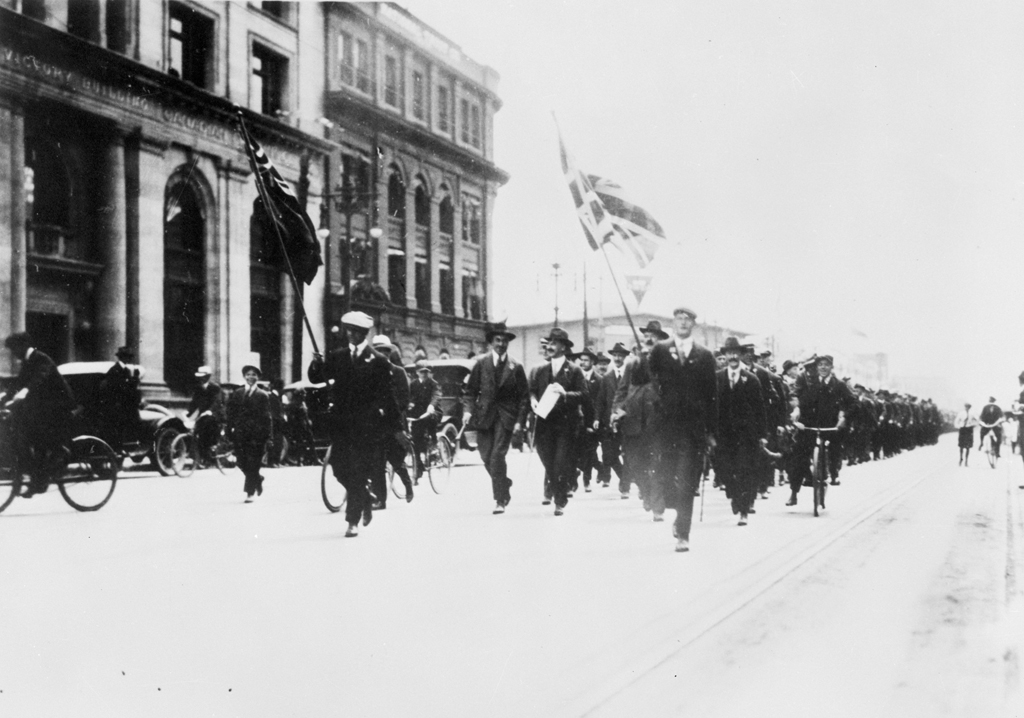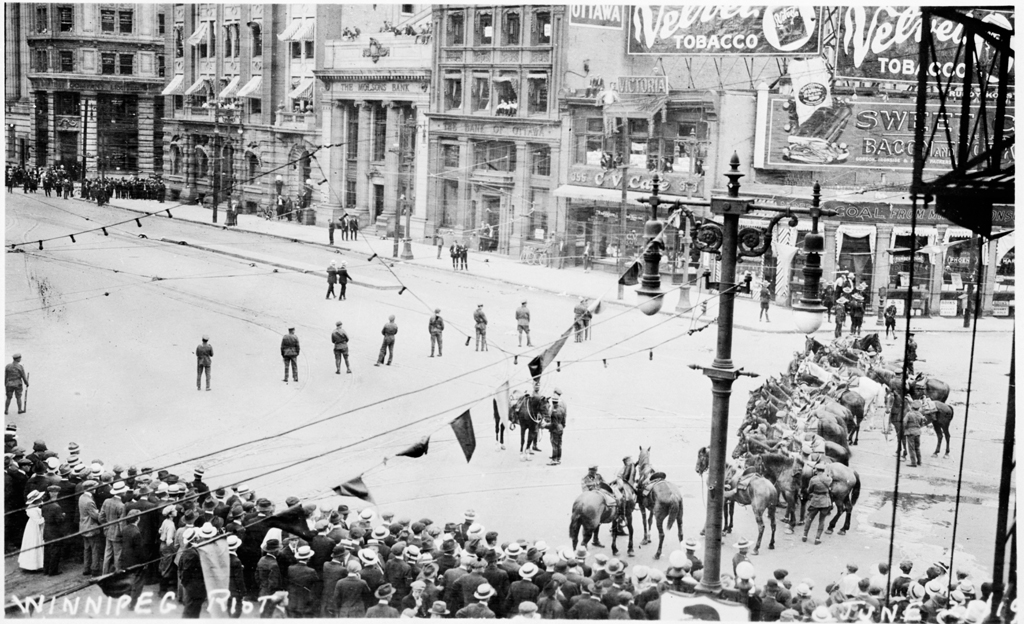It’s been a century, but people can still visit some of the key sites of the Winnipeg General Strike.

The Exchange District Biz has been offering hour-long tours for years, but extended their walking history lesson to an hour and a half to highlight the anniversary.
“Because it’s now the 100th anniversary of the strike, there’s a lot more information out there that we would like to share and talk about,” Sabrina Janke, Tour Manager of Exchange District Biz said.
The tour includes a stop at City Hall, to highlight what political choices impacted the start of the strike and what continued to fuel the frustrations over the six-week strike.
The tour also includes stops in the industrial district, the financial district and the waterfront where protesters gathered to share information about strike negotiations.
“There wasn’t really a building they could meet inside, so you could come here and people would be delivering speeches, news, and actually leading labour hymns to the crowd. So you could figure out how negotiations are going and what might be going on later,” Janke said.
More than 30,000 workers walked off the job in Winnipeg on May 15, 1919. It brought the city to a standstill and was the largest strike in the country’s history. And even started sympathetic strikes in other Canadian centres.
After the First World War, many of the returning workers struggled to afford to live. Their demands included better pay and better working conditions. The strike united the working class to demand better treatment.

Get daily National news
On June 10, the federal government ordered the arrest of eight strike leaders.
On June 21 — a day that became known as Bloody Saturday — police armed with guns and clubs charged on foot and horseback into a crowd on Main Street. One worker was shot and killed; another who was shot died later of gangrene. Thirty others were wounded.
Five days later, the strike was called off.
Strike leaders would stand trial on sedition. Seven of the eight were convicted.
The defeat spurred new efforts to change the system from within.
-With files from the Canadian Press
- Americans can now renew passports online. Canadians are still waiting
- ‘Deeply ashamed’: Canadian Medical Association apologizes for harms to Indigenous peoples
- Stolen portrait of Sir Winston Churchill one step closer to returning home
- Pablo Rodriguez quits Trudeau cabinet to seek Quebec Liberal leadership






















Comments